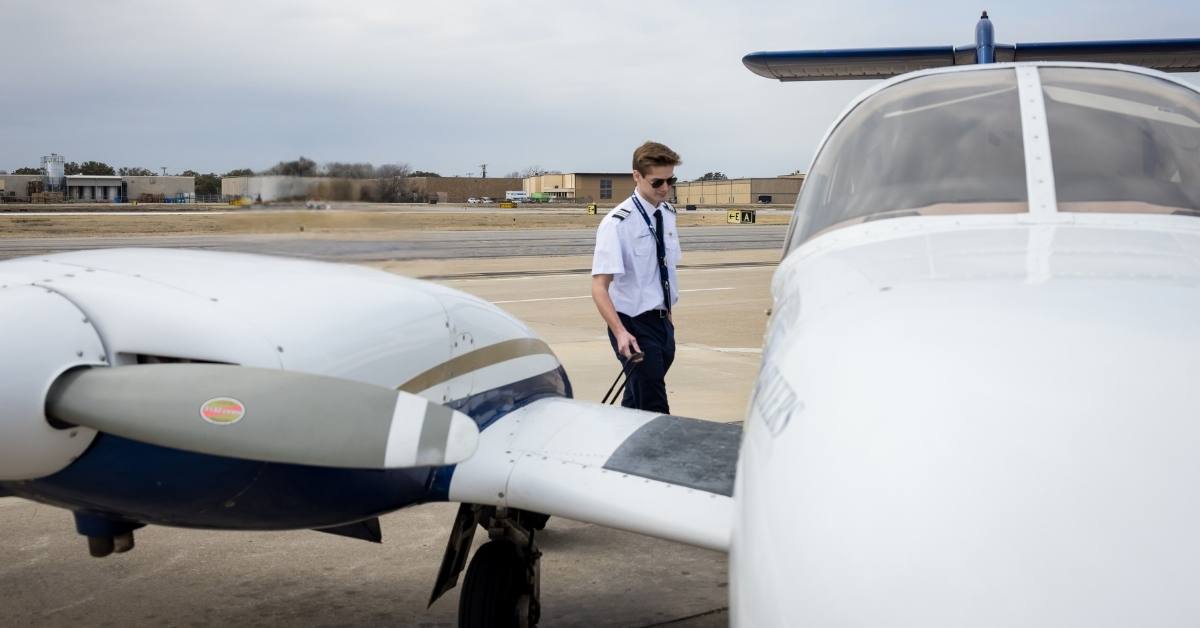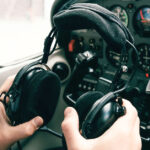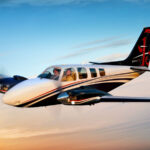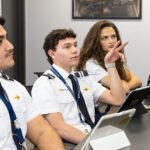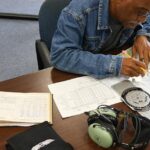A pilot’s first solo flight is a major milestone filled with pride, excitement, and a touch of nervousness. For many students, it’s the moment everything clicks: all the ground school, dual flights, and practice come together, and you realize you’re ready to fly an aircraft completely on your own.
At American Flyers, we understand the emotional and technical significance of this achievement. Here’s what to expect and how to prepare so you can approach your first solo with confidence and clarity.
What Is a Solo Flight?
A solo flight is the first time a student pilot flies an aircraft alone, without an instructor onboard. Legally and practically, it marks the moment when your Certified Flight Instructor (CFI) trusts you with full control of the aircraft.
Before you can solo, your instructor must endorse your logbook and confirm you’ve met all necessary FAA requirements, including:
- Demonstrated proficiency in takeoffs, landings, and emergency procedures
- Passed the pre-solo knowledge exam
- Received adequate training in airport traffic patterns and radio communication
- Displayed sound decision-making and safety awareness
What to Expect on the Day of Your Solo
On the day of your solo flight, you’ll likely complete one final review flight with your instructor. They’ll evaluate your consistency, judgment, and handling of the aircraft. Once you’re cleared, the instructor will step out of the airplane, and it’s all you.
Here’s what the experience usually includes:
1. Preflight and Mindset Check
You’ll complete your normal preflight inspection, but this time with heightened awareness. It’s normal to feel a mix of nerves and adrenaline. Take a breath, stay focused, and trust your training.
2. Taxi and Takeoff
The first solo takeoff can feel surreal. With less weight, expect quicker acceleration and a faster climb. Maintain a calm pace, double-check your checklist, and commit to each step with intention.
3. Traffic Pattern Work
Most first solos are flown in the traffic pattern at your home airport, involving 2–3 takeoffs and landings. This familiar setting allows you to demonstrate mastery of basic flight operations in a controlled, predictable setting.
4. Landing with Confidence
Landing solo is one of the most satisfying moments of a pilot’s training. Trust what you’ve practiced, stabilize your approach, manage your speed, and execute the flare. Even if it’s not your smoothest landing, you did it solo, and that’s what counts.
5. Post-Flight Emotions
After taxiing back and shutting down the aircraft, the reality sinks in: you’re now a soloed pilot. Expect smiles, handshakes, and even ringing the bell at American Flyers, a tradition all of our students get to experience and enjoy after this milestone.
How to Prepare for Your First Solo
Preparation is key to a successful, confident solo. Here’s how to get ready, both technically and mentally:
1. Commit to Consistent Training
Regular practice keeps your skills sharp and your confidence high. Consistency in training helps reinforce muscle memory and builds the trust your instructor needs to sign you off.
2. Know Your Aircraft
Be intimately familiar with your aircraft’s performance specs, checklist procedures, and normal operating characteristics. This familiarity reduces hesitation and increases your ability to respond to unexpected situations.
3. Review Emergency Procedures
Even though your first solo is conducted in ideal weather and a controlled environment, you must be ready for the unexpected. Practice engine-out scenarios, radio failures, and go-arounds until you can execute them without hesitation.
4. Mentally Rehearse the Flight
Visualization is a powerful tool. Walk through each phase of flight in your head, from startup to shut down. Anticipate radio calls, pattern turns, and what you’ll do if something doesn’t go as planned.
5. Ask Questions
Never hesitate to ask your instructor anything you’re unsure about, even right before the solo. Confidence comes from clarity, and your instructor’s job is to ensure you’re fully prepared.
Embracing the Milestone
It’s completely normal to feel nervous before your first solo. Many pilots say the hardest part was taxiing back to the runway alone, but once they were airborne, their training took over. That sense of focus and freedom often becomes one of the most treasured memories of a pilot’s journey.
You’re Ready
Soloing is more than just a checkbox; it’s the moment you realize, “I can really do this.” It builds confidence, reinforces responsibility, and sets the tone for the rest of your training. You won’t be alone in preparing for it. Your instructor, support staff, and fellow students at American Flyers are with you every step of the way.
So when the time comes, and you hear your instructor say, “You’re ready,” believe it, because you are.




